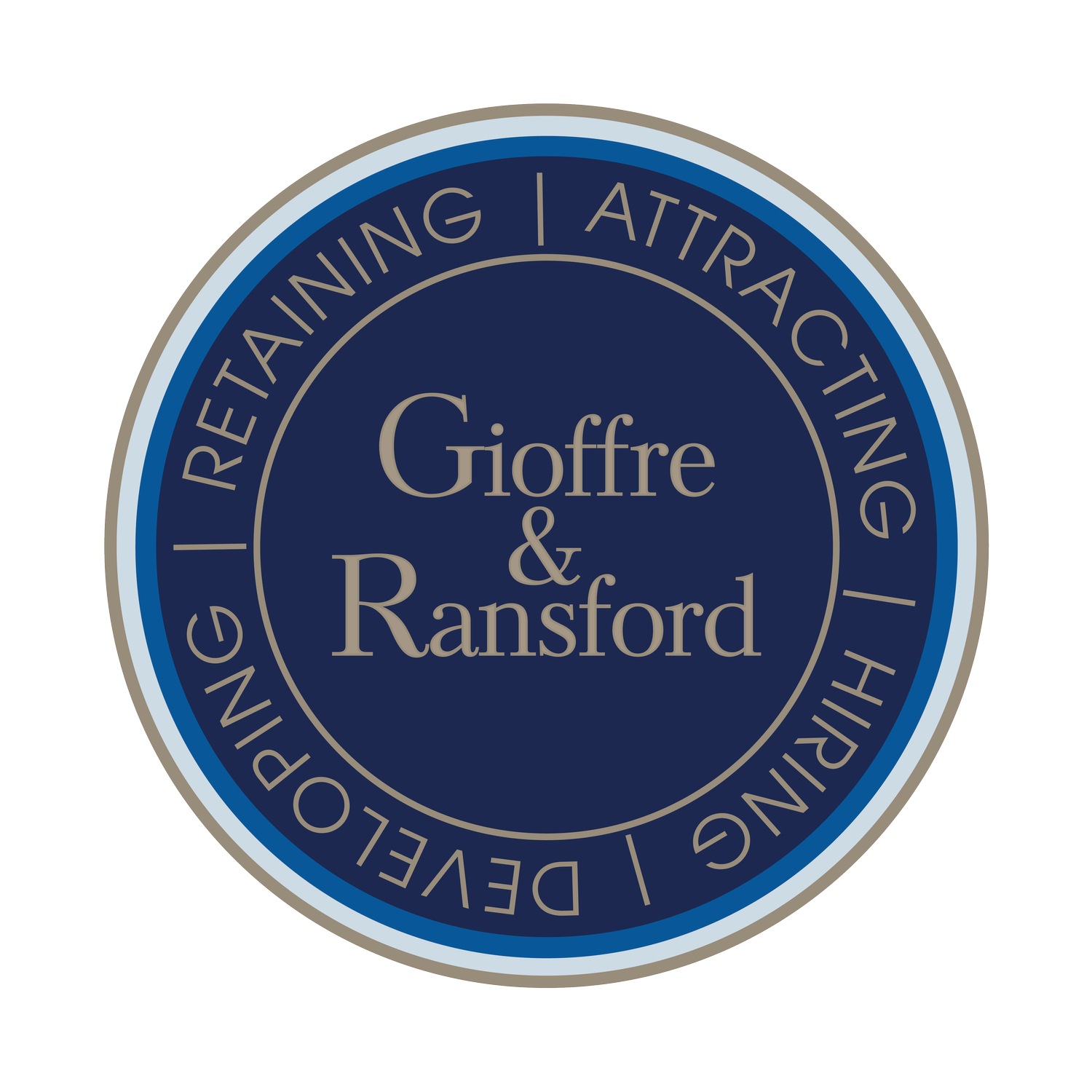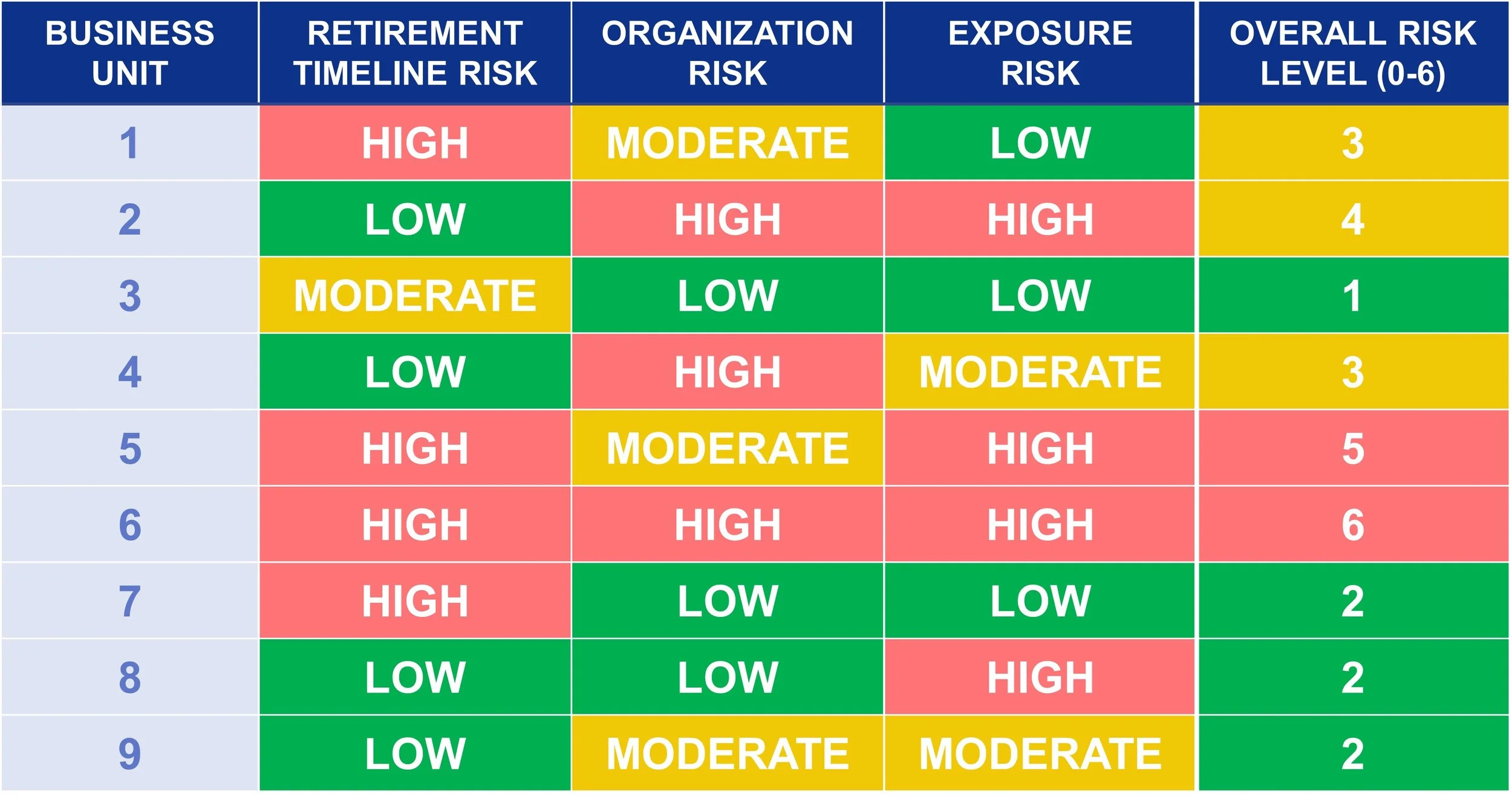Preparing for the Inevitable Wave of Retiring Employees: Risk Assessment
In our previous blog about preparing for the retirement bubble, we acknowledged the need to de-risk your organization to ensure a smooth transition of people, knowledge, and customer relationships in the post-retirement era. We established that the first step of this journey is to identify and understand the risks, in all their complexity, within your organization.
To thoroughly assess the risk of a potential retirement wave, a systematic approach can be used. One example is to start with a deep data analysis of the current talent pool to produce a ‘Heat Map’ that can help you quickly identify high risk areas:
Retirement Risk Heat Map – Example Risk Assessment.
Scoring methodology: Low = 0, Moderate = 1, High = 2
The heat map is a visual representation of risk scores that are calculated with several inputs such as demographic data, an organizational analysis, and leadership interviews.
The categories of risk include:
Retirement Timeline Risk: A high score indicates many near term and/or likely to occur retirement timelines for the business unit.
Organization Risk: A high score indicates risks identified including, but not limited to, operational roadblocks, institutional knowledge, cultural decline, and bench strength.
Exposure Risk: A high score indicates risks based on subgroup role (e.g., geography, diversity, organizational level – see previous blog for further detail).
Overall Risk is the sum of the three risk scores.
While the ideal scoring system will be unique for every organization, one key consideration included above is Exposure Risk. Accounting for subgroups allows you to evaluate a key, compounding factor considering today’s workforce demographics: the expectation that many retirements may occur in a small timeframe, and therefore have an even greater impact. Understanding the broader impact of attrition risks is an additional layer of analysis that ensures that the risk assessment is a holistic evaluation.
Take the time to develop a unique, comprehensive risk assessment that you will be confident in for years to come. This will be an essential building block in your continuous preparation for ongoing waves of retirement.


